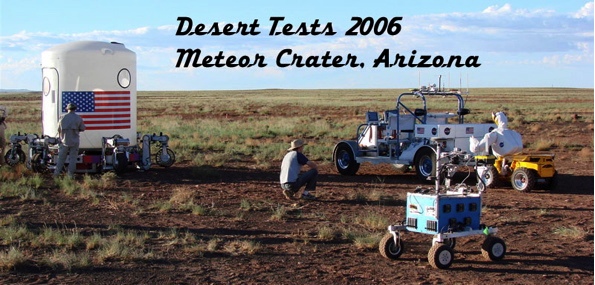NASA tests Linux-based robots
The K-10 robot is being exercised this week by a
NASA working group called "Desert-RATS" in Meteor Crater, AZ. With
off-the-shelf components and Red Hat Linux on board, this is part of a new
generation of more affordable robots.

The K-10 robot is being exercised this week by a NASA working group called “D-RATS” (desert research and technology studies). Comprised of both NASA and non-NASA scientists, D-RATS aims to give next-generation engineers, scientists, technicians, and astronauts hands-on experience expected to be of use in realizing the goals of NASA’s Constellation Program, which is tasked with creating Crew Exploration Vehicles (CEV), Crew Launch Vehicles (CLV), and related exploration architecture systems for manned and unmanned planetary exploration.
The K-10 uses commercial off-the-shelf parts where possible, in order to save cost and promote maintainability. The robot rover’s control and communications system is based on an IBM Thinkpad X31 with Intel Pentium M processor clocked at 1.4GHz.
The K-10 runs Red Hat Linux, which NASA says was chosen for its large user base and application compatibility. Additionally, NASA notes that, “Linux’s flexibility and scalability enable us to easily add, remove, and extend devices with minimal difficulty.”
The K-10 is controlled wirelessly, via a PCMCIA-based 802.11g interface connected to an 8db 2.4GHz antenna via an RF cable. The control application runs on the control laptop as a single, multi-threaded userspace application. Real-time performance is not required, NASA says, because real-time tasks such as fine-grained motor control are offloaded to a distributed network of microcontroller-powered control boards.
Additional details, including links to live Java webcams showing this week’s Arizona maneuvers are in the article. The photos are snazzy. I really recommend clicking through and checking out the whole article.
Posted: Sat - September 16, 2006 at 05:40 AM